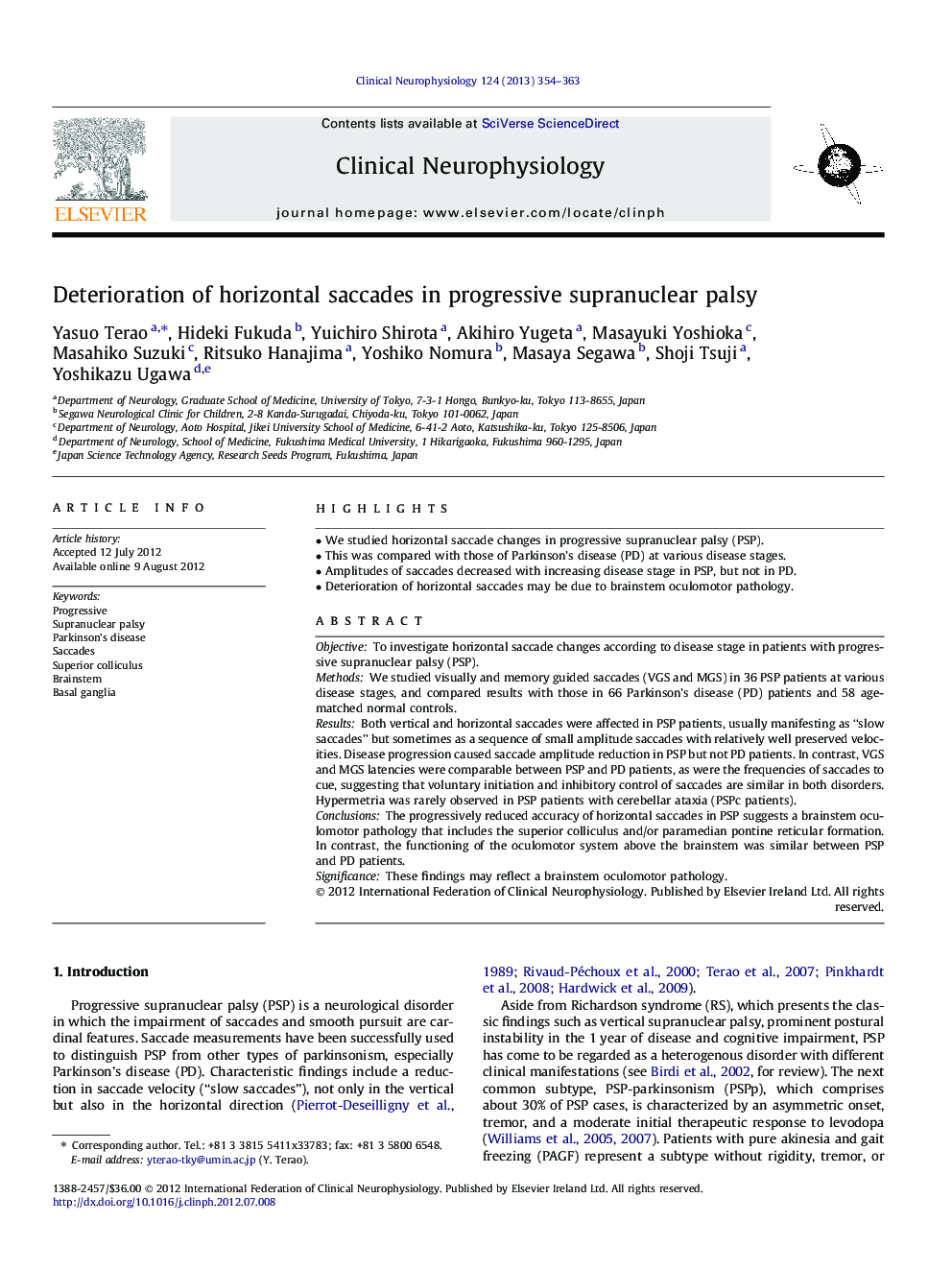| Article ID | Journal | Published Year | Pages | File Type |
|---|---|---|---|---|
| 3044616 | Clinical Neurophysiology | 2013 | 10 Pages |
ObjectiveTo investigate horizontal saccade changes according to disease stage in patients with progressive supranuclear palsy (PSP).MethodsWe studied visually and memory guided saccades (VGS and MGS) in 36 PSP patients at various disease stages, and compared results with those in 66 Parkinson’s disease (PD) patients and 58 age-matched normal controls.ResultsBoth vertical and horizontal saccades were affected in PSP patients, usually manifesting as “slow saccades” but sometimes as a sequence of small amplitude saccades with relatively well preserved velocities. Disease progression caused saccade amplitude reduction in PSP but not PD patients. In contrast, VGS and MGS latencies were comparable between PSP and PD patients, as were the frequencies of saccades to cue, suggesting that voluntary initiation and inhibitory control of saccades are similar in both disorders. Hypermetria was rarely observed in PSP patients with cerebellar ataxia (PSPc patients).ConclusionsThe progressively reduced accuracy of horizontal saccades in PSP suggests a brainstem oculomotor pathology that includes the superior colliculus and/or paramedian pontine reticular formation. In contrast, the functioning of the oculomotor system above the brainstem was similar between PSP and PD patients.SignificanceThese findings may reflect a brainstem oculomotor pathology.
► We studied horizontal saccade changes in progressive supranuclear palsy (PSP). ► This was compared with those of Parkinson’s disease (PD) at various disease stages. ► Amplitudes of saccades decreased with increasing disease stage in PSP, but not in PD. ► Deterioration of horizontal saccades may be due to brainstem oculomotor pathology.
